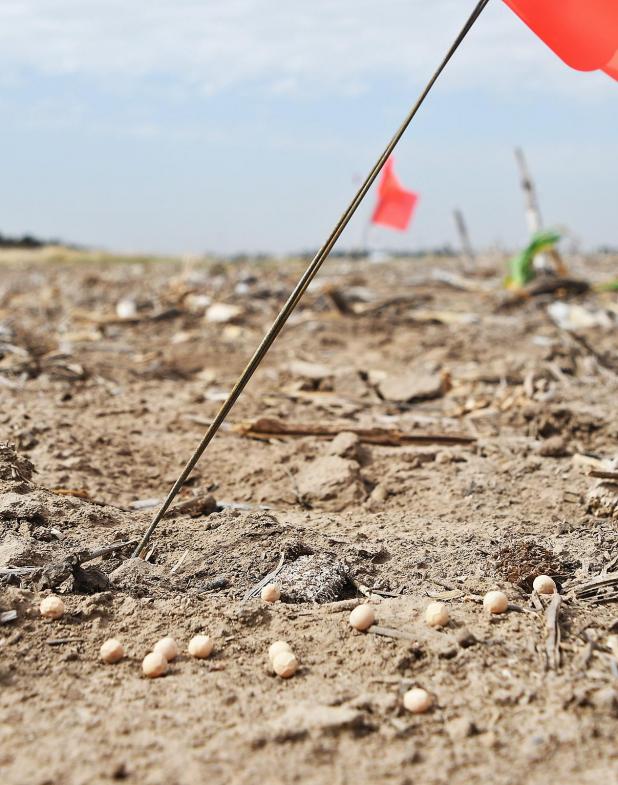
A dryland winter pea trial is being conducted this year at the Stumpf Center. An identical trial is being conducted at UN-L’s Sidney lab.
Stumpf Center site of winter pea field trials
Farmers in Perkins and Chase Counties know spring-planted peas can provide an alternative in dryland crop rotation.
What farmers probably don’t know is that it may be possible to grow winter peas that can be planted in the fall for harvest next summer.
Dr. Dipak Santra, alternative crops breeding specialist at UN-L’s Panhandle Research and Extension Center at Scottsbluff, wants to find out if winter peas can survive a Nebraska winter.
Santra has planted two identical winter pea test plots— one at the Stumpf International Wheat Center at Grant and another as the High Plains Ag Lab near Sidney.
Like winter wheat, winter peas require a prolonged cold period to begin the flower process in the spring. This process is called vernalization.
Santra planted the plots in late September. As of yet, the plants have not broken through the surface yet. Just like wheat, moisture is a factor in winter pea germination.
He said he’s excited about what a successful plot could mean for crop rotation, especially in winter wheat stubble.
Peas are not a host for wheat stem sawfly that can carry forward in the soil. Introduction of winter peas has the possibility of breaking the cycle since the sawfly does not have a plant host.
He said winter peas would work well in a rotation with winter wheat and millet.
Corn precedes the rotation with spring-planted peas, followed by wheat.
Like spring peas, winter peas enrich the soil by fixing nitrogen.
One year of variety trials under irrigation has already been completed at UN-L’s Panhandle Research and Extension Center at Scottsbluff.
The big question in this first year of the dryland trials is whether the winter pea can survive a Nebraska winter.
He said the trials include 15 different peas varieties from three different seed companies. All 15 are intended for human consumption.
ALTERNATIVE IN ROTATION
Winter field peas are grown in the Pacific Northwest for food-grade grain. Neighboring states such South Dakota and western Kansas have been testing winter pea production as well.
Presently, none of the economically viable alternative crops are fall-sown annual broadleaf crops. Current rotation choices in addition to wheat include spring or summer-sown pea and proso millet/sunflower/corn.
The winter pea is attractive for its potential to diversity and intensify wheat-based cropping systems in the semi-arid High Plains. The potential benefits and advantages are numerous:
Winter peas typically out-yields spring-planted peas by 20 to 30 bushels per acre. The crop can be planted more reliably at the optimal planting time than spring pea, due to late snows.
Winter pea is less susceptible to heat and drought conditions during flowering time, which frequently limit yield in spring-planted pea.
Planting a crop in the fall provides vegetative cover until the following spring, reducing wind erosion of soil.
To read the full story, subscribe by calling the Tribune at 308-352-4311 or sign up for an e-edition by clicking here.
